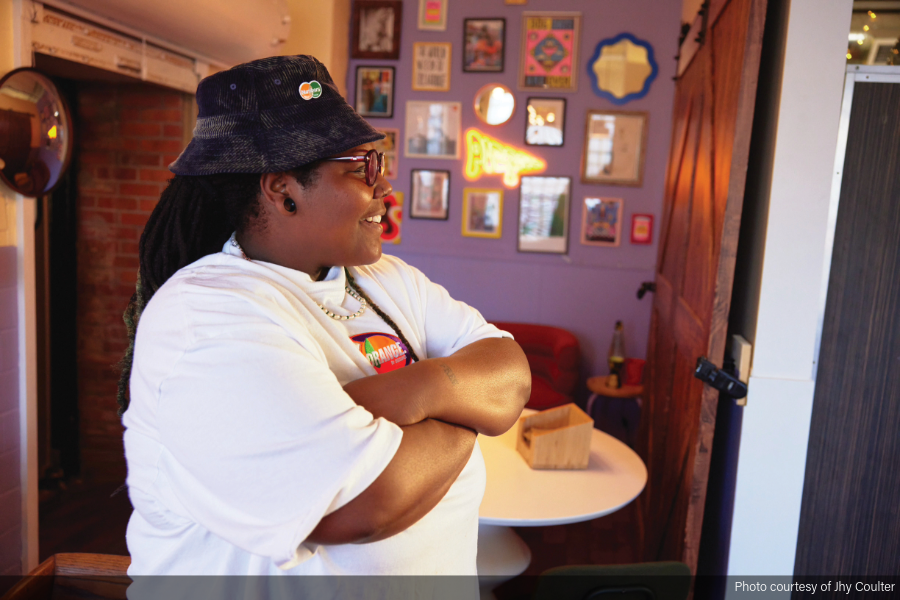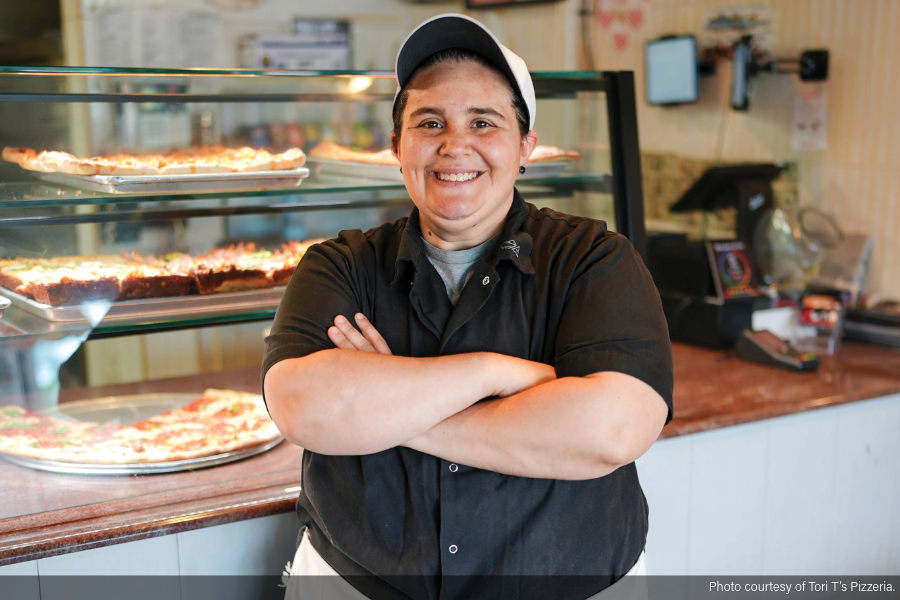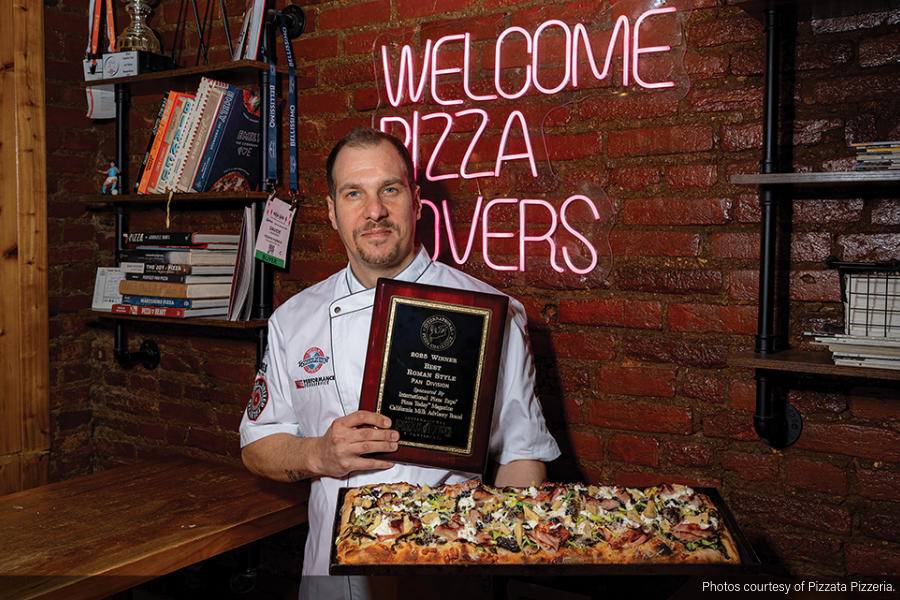The Dough Doctor breaks down yeast types and adding malt to dough

Tom Lehmann
Dough Expert
Q: Is there any one type of yeast that is better to use when making pizza than
another?
A: In one word, no. With that said, it all depends upon what you have available to you and what you are comfortable using. The most basic type of yeast is compressed yeast –– also known as wet yeast or brick yeast –– that can be crumbled and added directly to the dough along with the flour, but it must be stored under constant refrigeration to retain its viability. It also has a limited shelf life of something between two and four weeks.
Active dry yeast (ADY), on the other hand, must be activated/hydrated prior to use by putting it in about five times its weight of warm (100 F to 105 F) water, stirring it to suspend the yeast and waiting about 10 minutes for the yeast to begin bubbling. At this time it can be added to the dough. In its dry form ADY can be stored at ambient temperature for 6 months or more and still retain viability.
 Instant dry yeast (IDY) is a totally different animal from active dry yeast in that it doesn’t need to be activated/hydrated prior to use. IDY is best used by just adding the dry yeast directly to the flour and then begin mixing in your normal manner. The one exception to this is when a vertical cutter mixer will be used to mix the dough. Due to the short mixing times (60 to 75 seconds), it is recommended that the IDY be hydrated in 95 F water prior to addition to the mixer. IDY typically has a shelf life of one year or more at room temperature in the unopened package. But once opened it should be completely used within a week or so. The best way to save any unused IDY is to keep it in the original bag, roll the bag down onto the yeast and secure the folded bag with a rubber band. Some like to store the unused portion in the cooler, but during my extensive use of IDY over the past 35 years I’ve found that it actually keeps better if stored at room temperature. The reason for this is because when stored in the cooler and opened and resealed for use, after a number of times condensation can form in the bag that can be deleterious to the yeast viability, especially if the IDY will be held for more than a week in the cooler.
Instant dry yeast (IDY) is a totally different animal from active dry yeast in that it doesn’t need to be activated/hydrated prior to use. IDY is best used by just adding the dry yeast directly to the flour and then begin mixing in your normal manner. The one exception to this is when a vertical cutter mixer will be used to mix the dough. Due to the short mixing times (60 to 75 seconds), it is recommended that the IDY be hydrated in 95 F water prior to addition to the mixer. IDY typically has a shelf life of one year or more at room temperature in the unopened package. But once opened it should be completely used within a week or so. The best way to save any unused IDY is to keep it in the original bag, roll the bag down onto the yeast and secure the folded bag with a rubber band. Some like to store the unused portion in the cooler, but during my extensive use of IDY over the past 35 years I’ve found that it actually keeps better if stored at room temperature. The reason for this is because when stored in the cooler and opened and resealed for use, after a number of times condensation can form in the bag that can be deleterious to the yeast viability, especially if the IDY will be held for more than a week in the cooler.
Q: I’ve heard that adding malt to my dough will make the crust crispier. Is this true?
A: In all probability it will have just the opposite effect. There are two different classifications of malt: diastatic (enzyme active) and non-diastatic (non-enzyme active). The enzymes present in the diastatic malt will hydrolize starch into sugars that are fermentable by the yeast. This results in a softer, more sticky dough that will exhibit faster browning properties in the oven, resulting in a shorter baking time (to prevent “over baking”). This reduces the thickness of the bottom of the crust (browned portion). The resulting finished crust might be crispy when first removed from the oven but could quickly turn soft and floppy within minutes, if not seconds, of removal from the oven.
Additionally, remember we now have a higher sugar level in the dough. So as the dough is baked into a finished crust, the loss of moisture from the dough further concentrates the residual sugars in the finished crust. Since sugar has an affinity for water, it pulls moisture out of the air (think of all the steam present with a boxed pizza) as well as from the moisture released from the toppings on the pizza to create a soft, soggy crust.
If non-daistatic malt is used there is no enzyme activity present. This means there will be no starch hydrolysis for creating more sugar. The only sugar contribution will be that of the malt itself, which makes it much easier to control the post-baking crust softening issues. In this case, we must look at the malt only as an added source of sugar. If the use level is not too great we can achieve a slight flavor improvement in the finished crust, although with the sauce and toppings present it is questionable if your customers will recognize any difference. Plus the added malt (remember, it is a sugar) will typically require a shorter baking time. Also, the residual sugars will again be concentrated during baking, resulting in a finished crust with undesirable hygroscopic properties.
 So when can we use malt? If the flour that you are using is an un-malted flour, it may benefit from the addition of a small amount of diastatic malt. In this case the benefits will be in the form of more active fermentation over several days of cold fermentation and an improvement in crust color without the need to bake at temperatures approaching or exceeding 700 F.
So when can we use malt? If the flour that you are using is an un-malted flour, it may benefit from the addition of a small amount of diastatic malt. In this case the benefits will be in the form of more active fermentation over several days of cold fermentation and an improvement in crust color without the need to bake at temperatures approaching or exceeding 700 F.
If it sounds as if there isn’t much benefit to adding malt to a pizza dough you’re probably right. Any flavor benefit is lost in the overall flavor provided by the added herbs, sauce and toppings. The impact upon crust color is typically outweighed by its adverse impact upon crispiness. If your flour is already malted at the flourmill, there is little reason to add additional malt.
In the off chance that your flour is not malted, there might be some advantage to adding diastatic malt to your dough formula if you manage your dough for more than 48 hours through the cooler, or do not use an oven capable of achieving the temperature needed to give the desired crust color within a reasonable baking time. Even then, you don’t need to go on a quest to find diastatic malt since the addition of just plain old sucrose will also work just fine by providing fermentable sugars for the yeast to feed upon while the residual sugar will help to provide the desired crust color characteristics at lower baking temperatures.
If you are in an area where high starch damage flour (12 to 20 percent) is the norm, don’t even think about adding diastatic malt to your dough formula because the enzymes (amylase) will have a nearly unlimited source of damaged starch to rapidly (within 90 minutes) hydrolyze into sugars to create a soft, soupy dough with all of the unique and sticky characteristics of fly paper.
Tom Lehmann is a former director at the American Institute of Baking in Manhattan, Kansas and Pizza Today’s resident dough expert.







